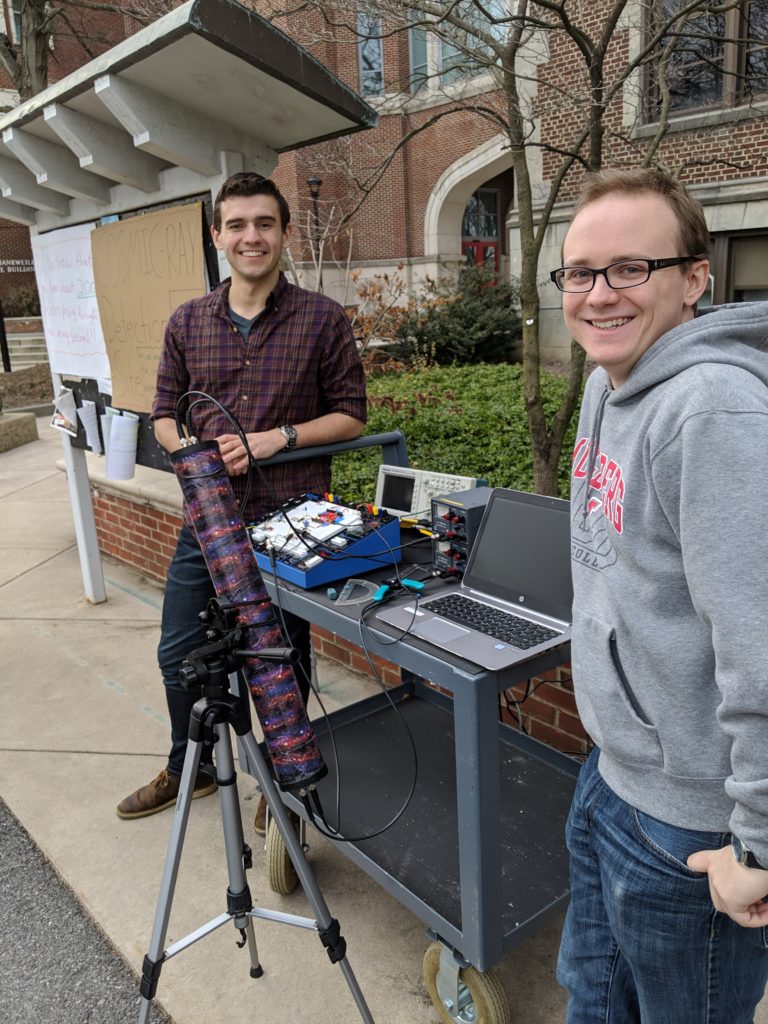On Mar. 14, members of the Physics CUE course set up on academic row to test the subject of their final project: a muon angular distribution detector.
James Silva ‘19 has been working with his classmates on perfecting the design of the detector drafted by their instructor, Dr. Brett Fadem. The device, a long cardboard tube on a tripod connected to a circuit board and a laptop, is designed to detect muons, a type of elementary particle. This project is part of Fadem’s long-term work with this type of detector and its possible applications.
“We are measuring the angular distributions of these little particles called muons (which can be best understood as much heavier electrons) coming from our atmosphere,” says Silva, explaining the experiment for broader audience. “We all have about 200 of these muons passing through us every second!”
Muons and muon detectors help physicists with a variety of research; from measuring the electric potential of thunderstorms to discovering hidden chambers in the Great Pyramid of Egypt and detecting nuclear waste.
Aside from testing and improving the device, the students also seek to use their less-expensive detector to help other college and high school students perform physics research affordably.

“Our detector and circuitry set up is Dr. Brett Fadem’s brainchild and was made with two motivations: Create a culminating senior physics experiment that requires knowledge of circuitry, programming, 3D-printing and particle physics and to create a cheap muon angular distribution detector that colleges with low budgets can afford,” explains Silva. “After it is perfected it could potentially be configured to be used by advanced high school students to learn about particle physics as well as the basics tools of circuitry such as about resistors, capacitors and oscilloscopes.”
On Pi day, Silva, his research partner Ricky Morash, ‘19, and other members of the Physics CUE could be seen explaining their research with passerby, discussing particle physics, and “taking measurements of the rate of muons at various angles.”
Silva expresses his excitement for the future of the CUE’s detector design and the many helpful uses it could have at Muhlenberg and elsewhere.
“Our project has a future too,” says Silva. “We improved the design, but there are still many ideas and approaches to explore and more improvements to be made. Future groups in the Physics CUE and even departments at other institutions will continue building the next iterations of the experiment until it is perfected.”
Laura is a sophomore Media and Communication student in the Pre Law program. In addition to being News Editor at the Weekly, she is a DJ at Muhlenberg's radio station WMUH.






















